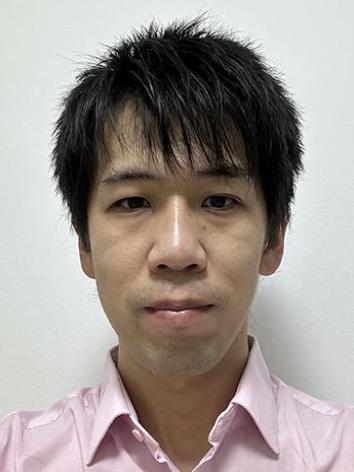Laboratory of Molecular Membrane Biology
The ultimate goal of Suzuki’s laboratory is to understand the role of inter-organelle communication. Eukaryotic cells compartmentalize biochemical reactions and cell signaling events in membrane-bound organelles. These organelles actively communicate with each other at the membrane-contact sites (MCSs). To facilitate this, membrane remodeling occurs at the MCSs remains unclear. Recently, we discovered an unexpected interplay directly linking the ER-endosome contact sites to the biogenesis of the multivesicular body (MVB), which is mediated by the endosomal sorting complex (ESCRT): VPS13 bridges ER to the endosomes and transports lipids for the nascent intralumenal vesicles in MVBs [Suzuki*(corresponding author) et al., J. Cell Biol. 2024]. Excitingly, these observations open up new avenues for the understanding of membrane dynamics at the MCSs. Looking ahead, Suzuki’s lab will utilize an interdisciplinary approach to study how organelle-contact sites contribute to membrane remodeling in both yeast and human cells. Given that loss-of-function mutations in genes encoding the MCS resident proteins, including VPS13, are directly linked to neurological disorders such as Parkinson’s disease. His research program will be uniquely positioned toward new mechanisms underlying neurodegenerative diseases.
LAB MEMBERS
 | LEAD PI Sho Suzuki Nanyang Assistant Professor (NRF) Email: sho.suzuki@ntu.edu.sgPhone:(65) 6316 2809 Office: SBS-05N-20 |
CURRENT PROJECTS
- Investigating the role of ER in the endolysosome system
- Elucidating the mechanism of endosomal sorting
- Assessing the impact of mutations associated with Parkinson’s and Alzheimer’s diseases on the endosomal system
PUBLICATIONS
- Suzuki SW♰(♰corresponding author), West M, Zang Y, Fan JS, Roberts RT, Odorizzi G, and Emr SD. (2024). A role for Vps13-mediated lipid transfer at the ER-endosome contact site in ESCRT-mediated sorting. J. Cell Biol. 223(4):e202307094.
- Suzuki SW, and Emr SD. (2022). Immunoisolation of endosomal recycling vesicles from S.cerevisiae. bio-protocol, e4403-e4403.
- Banjade S, Zhu L, Jorgensen JR, Suzuki SW, and Emr SD. (2022). Recruitment and organization of ESCRT-0 and ubiquitinated cargo via condensation. Science Advances, 8:eabm5149.
- Suzuki SW, Oishi A, Nikulin N, Jorgensen JR, Baile MG, and Emr SD. (2021). A PX-BAR protein Mvp1/SNX8 and a dynamin-like GTPase Vps1 drive endosomal recycling. eLife, 10:e69883.
- Suzuki SW, Chuang YS, Li M, Seaman MNJ, and Emr SD. (2019). A bipartite sorting signal ensures specificity of retromer complex in membrane protein recycling. J. Cell Biol., 218(9), 2876-2886. [Highlighted in a News and Views in Nat. Cell Biol. (PMID: 31576057)]
- Suzuki SW and Emr SD. (2018). Retrograde trafficking from the vacuole/lysosome membrane. Autophagy, 14(9), 1654-1655.
- Suzuki SW and Emr SD. (2018). Membrane protein recycling from the vacuole/lysosome membrane. J. Cell Biol., 217(5), 1623-1632. [Highlighted in Prospects and Overviews in BioEssays (PMID: 30706963)] [Selected in a special collection of “Lipid and membrane biology”, “Autophagy” in J. Cell biol.]
- Yamamoto H*, Fujioka Y*, Suzuki SW* (*co-first author), Noshiro D, Kondo-Kakuta C, Kimura Y, Hirano H, Arisaka F, Ando T, Noda NN, and Ohsumi Y. (2016). An intrinsically disordered protein Atg13 links multiple Atg1 complexes to facilitate higher-order assembly of autophagy initiation machineries. Dev. Cell, 38(1), 86-89. [Highlighted in Nobel Prize lecture, 2016]
- Sakakibara K, Eiyama A†, Suzuki SW† (†contribute equally), Sakoh-Nakatogawa M†, Okumura N†, Tani M†, Hashimoto A, Nagumo S, Kondo-Okamoto N, Kondo-Kakuta C, Asai E, Kirisako H, Nakatogawa H, Kuge O, Takao T, Ohsumi Y, and Okamoto K. (2015). Phospholipid methylation controls Atg32-mediated mitophagy and Atg8 recycling. EMBO J., 34(21): 2703-2719.
- Yu F, Imamura Y, Ueno M, Suzuki SW, Ohsumi Y, Yukawa M, and Tsuchiya E. (2015). The yeast chromatin remodeler Rsc1-RSC complex is required for transcriptional activation of autophagy-related genes and inhibition of the TORC1 pathway in response to nitrogen starvation. Biochem. Biophys. Res. Commun., 464(4), 1248-1253.
- Suzuki SW, Yamamoto H, Oikawa Y, Kondo-Kakuta C, Kimura Y, Hirano H, and Ohsumi Y. (2015). Atg13 HORMA domain recruits Atg9 vesicles during autophagosome formation. Proc. Natl. Acad. Sci. USA, 112(11), 3350-3355. [Highlighted in Nobel Prize lecture, 2016]
- Fujioka Y*, Suzuki SW* (*co-first author), Yamamoto Y*, Kondo-Kakuta C, Kimura Y, Hirano Y, Akada R, Inagaki F, Ohsumi Y, and Noda NN. (2014). Structural basis of starvation-induced assembly of the autophagy initiation complex. Nat. Struct. Mol. Biol., 21(6), 513-521. [Selected by the Faculty of 1000 Biology member] [Highlighted in Nobel Prize lecture, 2016]
- Nakatogawa H, Ohbayashi S, Sakoh-Nakatogawa M, Kakuta S, Suzuki SW, Kirisako H, Kondo-Kakuta C, Noda NN, Yamamoto H, and Ohsumi Y. (2012). The autophagy-related protein kinase Atg1 interacts with the ubiquitin-like protein Atg8 via the Atg8 family interacting motif to facilitate autophagosome formation. J. Biol. Chem., 287, 28503-28507.
- Kondo-Okamoto N, Noda NN, Suzuki SW, Nakatogawa H, Takahashi I, Matsunami M, Hashimoto A, Inagaki F, Ohsumi Y, and Okamoto K. (2012). Autophagy-related protein 32 acts as autophagic degron and directly initiates mitophagy. J. Biol. Chem., 287, 10631-10638. [Selected by Faculty of 1000 Biology]
- Suzuki SW, Onodera J, and Ohsumi Y. (2011). Starvation induced cell death in autophagy-defective yeast mutants is caused by mitochondria dysfunction. PLoS ONE., 6, e17412.

